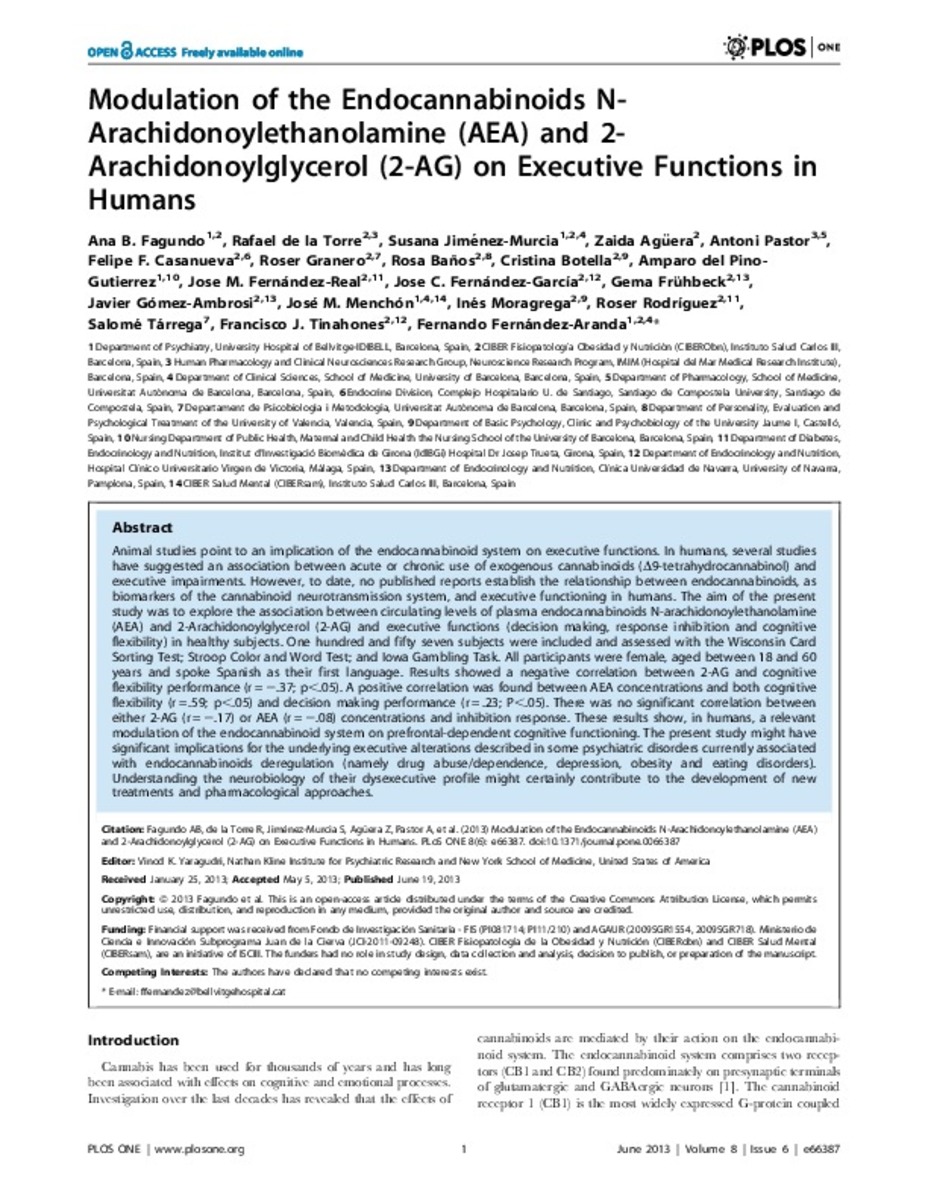Full metadata record
| DC Field | Value | Language |
|---|---|---|
| dc.creator | Fagundo, A.B. (Ana B.) | - |
| dc.creator | Torre, R. (Rafael) de la | - |
| dc.creator | Jimenez-Murcia, S. (Susana) | - |
| dc.creator | Agüera, Z. (Zaida) | - |
| dc.creator | Pastor, A. (Antoni) | - |
| dc.creator | Casanueva, F.F. (Felipe F.) | - |
| dc.creator | Granero, R. (Roser) | - |
| dc.creator | Baños, R. (Rosa) | - |
| dc.creator | Botella, C. (Cristina) | - |
| dc.creator | Pino-Gutierrez, A. (Amparo) del | - |
| dc.creator | Fernandez-Real, J.M. (José Manuel) | - |
| dc.creator | Fernandez-Garcia, J.C. (José C.) | - |
| dc.creator | Frühbeck, G. (Gema) | - |
| dc.creator | Gomez-Ambrosi, J. (Javier) | - |
| dc.creator | Menchon, J.M. (José M.) | - |
| dc.creator | Moragrega, I. (Inés) | - |
| dc.creator | Rodriguez, R. (Roser) | - |
| dc.creator | Tarrega, S. (Salomé) | - |
| dc.creator | Tinahones, F.J. (Francisco J.) | - |
| dc.creator | Fernandez-Aranda, F. (Fernando) | - |
| dc.date.accessioned | 2014-08-02T12:24:39Z | - |
| dc.date.available | 2014-08-02T12:24:39Z | - |
| dc.date.issued | 2013-06-19 | - |
| dc.identifier.citation | Fagundo AB, de la Torre R, Jiménez-Murcia S, Agüera Z, Pastor A, Casanueva FF, et al. Modulation of the endocannabinoids N-arachidonoylethanolamine (AEA) and 2-arachidonoylglycerol (2-AG) on executive functions in humans. PLoS One. 2013 Jun 19;8(6):e66387 | es_ES |
| dc.identifier.issn | 1932-6203 | - |
| dc.identifier.uri | https://hdl.handle.net/10171/36211 | - |
| dc.description.abstract | Animal studies point to an implication of the endocannabinoid system on executive functions. In humans, several studies have suggested an association between acute or chronic use of exogenous cannabinoids (Δ9-tetrahydrocannabinol) and executive impairments. However, to date, no published reports establish the relationship between endocannabinoids, as biomarkers of the cannabinoid neurotransmission system, and executive functioning in humans. The aim of the present study was to explore the association between circulating levels of plasma endocannabinoids N-arachidonoylethanolamine (AEA) and 2-Arachidonoylglycerol (2-AG) and executive functions (decision making, response inhibition and cognitive flexibility) in healthy subjects. One hundred and fifty seven subjects were included and assessed with the Wisconsin Card Sorting Test; Stroop Color and Word Test; and Iowa Gambling Task. All participants were female, aged between 18 and 60 years and spoke Spanish as their first language. Results showed a negative correlation between 2-AG and cognitive flexibility performance (r = -.37; p<.05). A positive correlation was found between AEA concentrations and both cognitive flexibility (r = .59; p<.05) and decision making performance (r = .23; P<.05). There was no significant correlation between either 2-AG (r = -.17) or AEA (r = -.08) concentrations and inhibition response. These results show, in humans, a relevant modulation of the endocannabinoid system on prefrontal-dependent cognitive functioning. The present study might have significant implications for the underlying executive alterations described in some psychiatric disorders currently associated with endocannabinoids deregulation (namely drug abuse/dependence, depression, obesity and eating disorders). Understanding the neurobiology of their dysexecutive profile might certainly contribute to the development of new treatments and pharmacological approaches. | es_ES |
| dc.language.iso | eng | es_ES |
| dc.publisher | Public Library of Science | es_ES |
| dc.rights | info:eu-repo/semantics/openAccess | es_ES |
| dc.subject | 2-arachidonoylglycerol | es_ES |
| dc.subject | N-arachidonoylethanolamine | es_ES |
| dc.subject | Endocannabinoids | es_ES |
| dc.subject | Executive functions | es_ES |
| dc.subject | Human | es_ES |
| dc.title | Modulation of the endocannabinoids N-arachidonoylethanolamine (AEA) and 2-arachidonoylglycerol (2-AG) on executive functions in humans | es_ES |
| dc.type | info:eu-repo/semantics/article | es_ES |
| dc.identifier.doi | http://dx.doi.org/10.1371/journal.pone.0066387 | es_ES |
Files in This Item:
Statistics and impact
Items in Dadun are protected by copyright, with all rights reserved, unless otherwise indicated.






